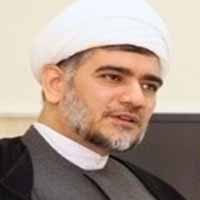The Study of the Conflict of Discourses on Political-Religious Meanings in Al-Ma'rifah Al-Sahaba Abu Naeem Isfahani (Case Study of the Translation of the Three Caliphs and Ali)
The introduction of al-Sahab al-Isfahani is one of the most important sources of fourteenth-century AH compilations which, like other epistemological sources in history, is not a clear and neutral phenomenon that distorts social, political, and religious realities but distorts the facts. These sources, therefore, may not be an accurate reflection of objectivity but rather a representation of historians' intentions and ideas, influenced by the contexts of the author's time. However, reflections on these narratives are relevant. Narrations on Rashidun caliphs at one point in history have been more self-thinking. Based on Critical Discourse's analysis of the discourse, Zn is attempting to reflect on the meaning and pattern of the al-Sahabah narrative's narrations about the 'three' caliphs of the 'a', so what is the meaning of the political-religious discourse of society? The point is that he will interpret how power (political-religious) is formed in the context that Abu'nim thinks of, reinforcing that hidden power by highlighting one idea and rejecting other ideas.
-
Civilization-Building Strategies of the Holy Quran with Emphasis on Surah Yusuf (Joseph)
Mahdi Nadi *, Seyyed Hossein Fallahzadeh,
Journal of Quran, Culture and Civilization, -
آموزه های اهل بیت (ع) در معماری تدفینی شیعی؛ بررسی موردی عناصر هویت ساز (از حمله مغول تا ظهور صفویه با محوریت استان قم و مرکزی)
*، حمیدرضا نژادرمضانی
نشریه تاریخ اهل بیت، پاییز و زمستان 1401



